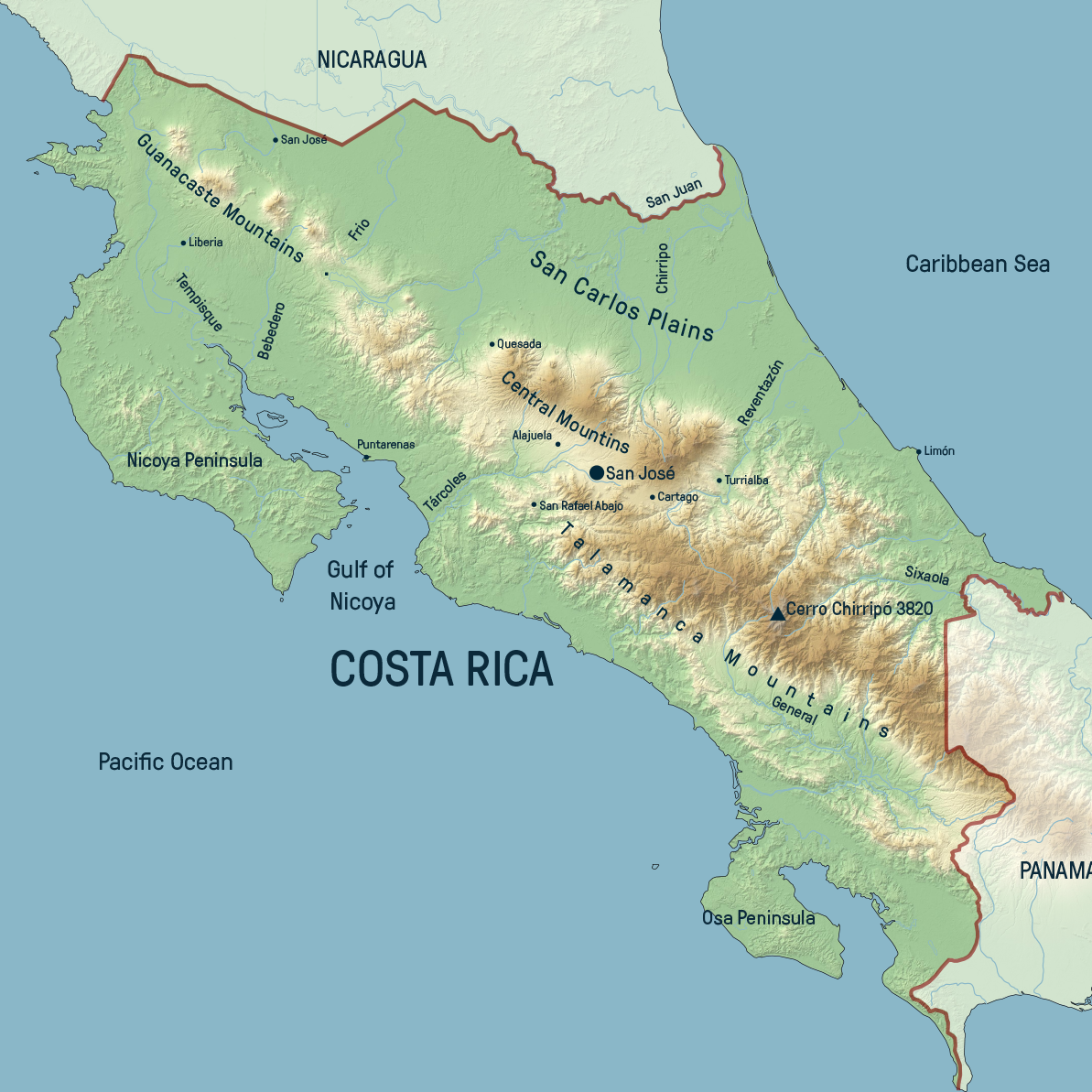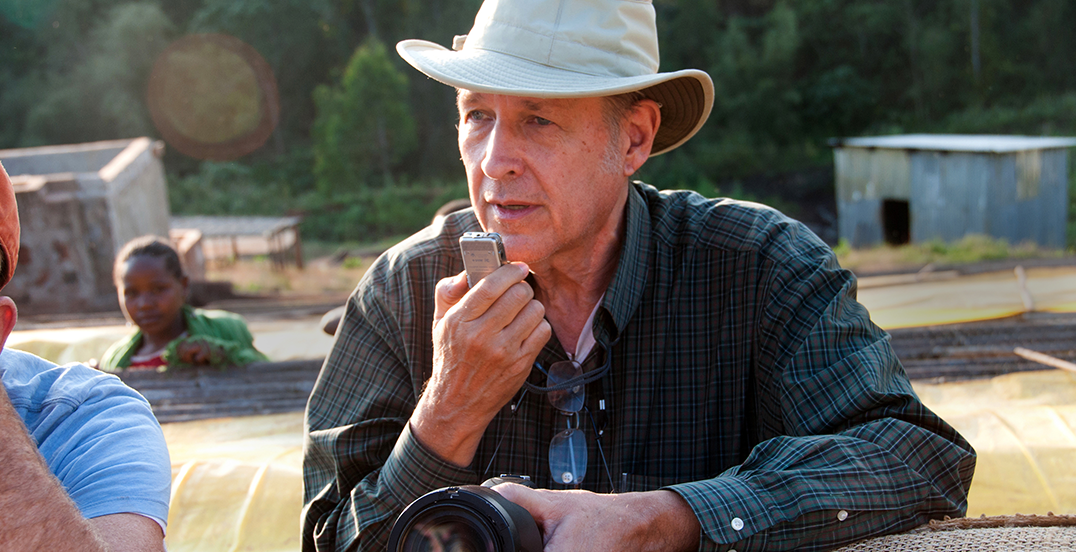

Costa Rica
Coffee has been grown in Costa Rica since the late 18th century. In modern times, Costa Rica, by far the most economically developed country in Central America, has set the standard in Central America for sustained good quality. While a few farms process their own coffees, much of the fresh-harvested crop of coffee cherries is trucked from farms in the mountains to regional centers, which extract, dry, sort and then blend the beans. Regional integrity is maintained.

Coffee is grown along the Costa Rican mountain chain that runs through the center of Costa Rica like a spinal cord, from Nicaragua in the Northwest to Panama in the Southeast. The climate on the Atlantic side is often clouded and rainy, while on the Pacific side the weather can be dry to moderate, producing more consistently crisp flavor profiles. Some of the finest coffees come from the Tres Rios area in the Central Plateau, where Costa Rica’s capital, San Jose, is located, and on the steep slopes of the Tarrazu region to the southeast of the Plateau.
Almost all Costa Rican coffees are either the Caturra or Catuai variety of Arabica. Costa Rican coffees are always processed using the washed method. The finest qualities are grown at altitudes of 4,000 to a little over 5,000 feet. Coffees grown at these altitudes are given the designation SHB, strictly hard bean. These coffees are lively, full-bodied, and aromatically pleasing. The best grades are carefully sorted by distinct sizes for even roasting, with defects and low-density beans eliminated.






